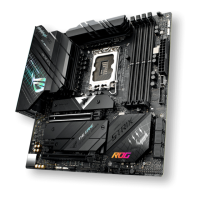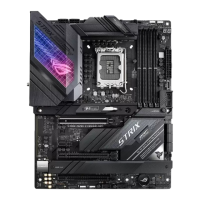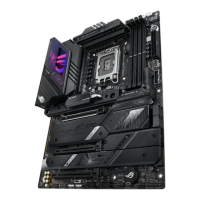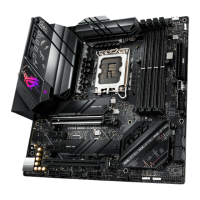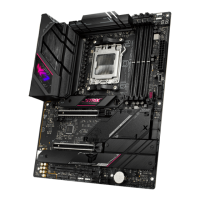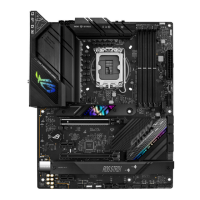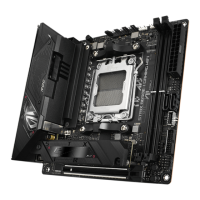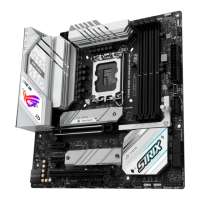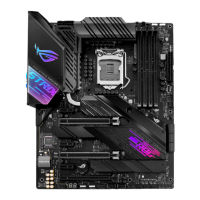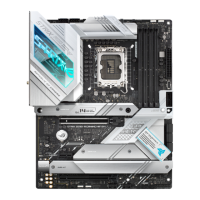
Do you have a question about the Asus ROG STRIX Z690-A GAMING WIFI and is the answer not in the manual?
| Processor socket | LGA 1700 |
|---|---|
| Processor manufacturer | Intel |
| Compatible processor series | Intel Celeron, Intel Core i3, Intel Core i5, Intel Core i7, Intel Core i9, Intel Pentium G |
| Non-ECC | Yes |
| Memory channels | Dual-channel |
| Memory slots type | DIMM |
| Number of memory slots | 4 |
| Supported memory types | DDR5-SDRAM |
| Maximum internal memory | 128 GB |
| Supported memory clock speeds | 4800, 5000, 5200, 5400, 5600, 5800, 6000, 6200, 6400 MHz |
| RAID levels | 0, 1, 5, 10 |
| Supported storage drive types | HDD & SSD |
| Supported storage drive interfaces | M.2, SATA III |
| Parallel processing technology support | - |
| USB 2.0 connectors | 2 |
| Number of SATA III connectors | 6 |
| USB 3.2 Gen 1 (3.1 Gen 1) connectors | 1 |
| DisplayPort version | 1.4 |
| USB 2.0 ports quantity | USB 2.0 ports have a data transmission speed of 480 Mbps, and are backwards compatible with USB 1.1 ports. You can connect all kinds of peripheral devices to them. |
| USB 3.2 Gen 1 (3.1 Gen 1) Type-C ports quantity | 0 |
| Wi-Fi standards | 802.11a, 802.11b, 802.11g, Wi-Fi 4 (802.11n), Wi-Fi 5 (802.11ac), Wi-Fi 6 (802.11ax), Wi-Fi 6E (802.11ax) |
| Bluetooth version | 5.2 |
| Top Wi-Fi standard | Wi-Fi 6E (802.11ax) |
| Ethernet interface type | 2.5 Gigabit Ethernet |
| Audio chip | Realtek ALC4080 |
| Cooling type | Active |
| Component for | PC |
| Motherboard chipset | Intel Z690 |
| Audio output channels | 7.1 channels |
| Motherboard form factor | ATX |
| Windows operating systems supported | Windows 10 x64, Windows 11 x64 |
| BIOS type | UEFI AMI |
| BIOS memory size | 256 Mbit |
| Harmonized System (HS) code | 84733020 |
| Weight | 1032 g |
| Depth | 244 mm |
|---|---|
| Width | 305 mm |
| Height | 70 mm |
Safety precautions before installation or setting changes.
Details on installing CPU and DIMM memory modules.
Information on PCIe slots, M.2 SSDs, and SATA connections.
Initial steps for building the PC and installing the CPU.
Procedures for installing CPU coolers and RAM modules.
Installing M.2 SSDs and PCIe expansion cards.
Mounting the motherboard and connecting ATX power.
